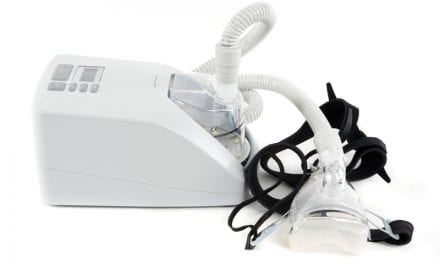“Consumers are getting more savvy about the quality and cost of their healthcare, especially with the growth in popularity of benefits with lower premiums but higher out-of-pocket payments,” says Dr Barry Malinowski, vice president and medical director for Anthem Blue Cross and Blue Shield in Ohio, in a release. “We recommend all consumers ask their doctors if they are candidates for in-home sleep testing, and if not, they should ask questions about the costs of similar quality facilities—which range widely in price.” The release cites sleep test costs ranging from $200 for in-home testing to $829 in an independent freestanding center to more than $1,800 in a hospital outpatient department.
When Anthem Blue Cross and Blue Shield members receive an order to get a facility test at a specific center that is at least $300 higher than other similar accredited facilities in a 30-mile radius, AIM Specialty Health, which handles clinical management services for Anthem, calls the member with information about these less expensive, accredited facilities and assists in scheduling an appointment if the member chooses.
“We have found an average difference in cost of $1,393 per facility test in Ohio,” says Thomas Power, MD, AIM medical director for cardiology and sleep medicine. “When you consider that most members are paying about 20-25% on average out of their own pocket for these tests, just that difference in savings could have been used to pay for groceries or make a monthly car payment.”
The Harvard Medical School Division of Sleep Medicine estimated in 2010 that the total annual economic cost of sleep apnea was $65-$165 billion—greater than asthma, heart failure, stroke, and hypertensive disease. The numbers included costs to diagnose and treat the condition, with a much larger percentage of the costs derived from hidden costs related to its impact on other diseases and its role in motor vehicle accidents.
Anthem Blue Cross Ohio and AIM Specialty Health assert that while a home-based test ordered by a physician is likely appropriate for 70% to 80% of patients with suspected sleep apnea, data show only about 25% to 30% of all sleep apnea testing takes place at home, according to a 2014 national analysis by AIM Specialty Health before the sleep program began. Doctors enter information about their patient into an AIM web service tool to determine whether an at-home test is appropriate for their patient. Today, 60% of those who are eligible in Anthem plans in Ohio are getting their sleep test at home.
For those whose condition is more appropriate for facility testing, AIM will contact members and inform them of options for sleep testing sites that have met accreditation and certification guidelines and provide competitive prices.
“For members who have high-deductible plans or consumer-driven health plans, this program can be useful in helping them control the portion of their health care costs they pay directly,” Malinowski says. “The sleep management program is one of several programs we put in place to help members and employers reduce or maintain costs while still offering the same quality of services. We are hopeful that these kinds of programs can also help us in controlling the rise of insurance premiums.”




